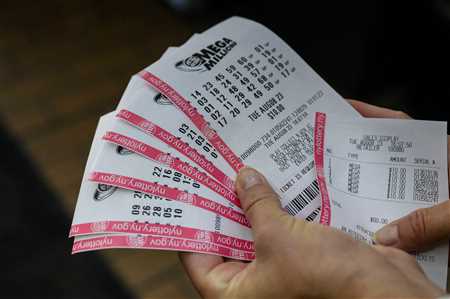

Every time individuals engage in a game of luck, there lies an underlying mystery that dictates the outcomes. The allure of potentially striking it rich can be captivating, yet many participants remain oblivious to the reality of success rates. This article delves into the statistics and probabilities associated with these games, illuminating how unlikely it truly is to secure a victory.
Calculating the probability of arriving at a favorable outcome unveils a world filled with numbers that often seem unfathomable. With such staggering figures, it becomes crucial to grasp just how slim the prospects are. By breaking down the math, one can begin to appreciate the intricate balance between the thrill of participation and the stark reality of likelihood.
Moreover, exploring this subject allows for a deeper comprehension of the mechanics at play beyond just luck. Unraveling the layers of data sheds light on why many dreamers remain dreamers, while only a select few manage to turn aspirations into tangible rewards. In the end, knowledge empowers participants, equipping them with a more informed perspective on their endeavors.
The thrill of participating in games of chance often raises questions about the likelihood of achieving a favorable outcome. Many individuals are drawn in by the allure of potential winnings, but the reality of success is rooted in mathematical principles that govern such activities. By delving into the realm of probabilities, one can truly appreciate the intricacies involved in these unpredictable scenarios.
Mathematical foundations are essential in assessing the feasibility of various results. Each action in a game is not merely random; it follows a specific structure that can be analyzed using combinatorial techniques. For instance, the number of possible combinations directly impacts the likelihood of hitting a significant prize.
Common misconceptions often arise from the popular portrayal of skilled play or strategies that claim to enhance the probability of winning. In reality, every entry is independent, meaning previous outcomes do not influence future results. It’s crucial to differentiate between the excitement of participating and the underlying statistics that inform the reality of winning.
This section delves into the fundamental principles that govern random number selection games. These games often attract attention due to their enticing prizes and the allure of a windfall, but the underlying structure is far more intricate than it may appear at first glance.
Initially, participants buy tickets, each representing a unique combination of numbers. Upon the drawing, a set of winning numbers is selected randomly, and those who have tickets matching these numbers stand to receive rewards. The excitement stems from the uncertainty and the sheer unpredictability of the results.
Different variations of these games exist, each with its own set of rules and methodologies for determining winners. Factors such as the total number of possible combinations and the frequency of draws contribute significantly to the overall dynamics. Understanding these mechanics is crucial for realizing what it truly means to take part in these games and the probabilities involved.
Numerous games of chance attract participants with the promise of substantial prizes, yet the mechanics behind these systems often remain unclear. Essentially, they function as a method for individuals to engage in a randomized selection process with the hope of garnering financial rewards.
The process begins with the creation of a pool of numbers or symbols from which winners are determined. Each participant selects a combination, and the results are usually drawn at scheduled intervals. Below are the primary components involved:
Ticket Purchase: Players buy tickets, which provide them the opportunity to select or receive a set of numbers.
Random Selection: Draws are conducted using either mechanical devices or electronic random number generators to ensure fairness.
Prize Distribution: If the drawn numbers match a player’s selection, they win a predetermined prize based on the rules established prior to the game.
Moreover, the revenue generated by sales often supports public initiatives, such as education, infrastructure, or charitable causes, adding an element of social contribution to the excitement of potential winnings.
In summary, these systems captivate many by blending hope and chance, while also creating funding avenues for various societal benefits.
Every game relies on a unique method for selecting fortunate combinations, which can result in substantial rewards for participants. This mysterious process captures the imagination and fuels aspirations of countless individuals. Let’s explore how these numbers are selected and the factors that play a role in this fascinating phenomenon.
Random Selection:
Most systems employ a random method for generating results, ensuring that every combination has an equal opportunity to emerge. This randomness is essential for maintaining fairness and excitement.
Machine Mechanics:
Many drawings are conducted using mechanical devices or computerized software designed to mix and draw the numbers. These machines undergo rigorous testing to guarantee their integrity and impartiality.
Public Transparency:
To foster trust among participants, many jurisdictions ensure that drawing events are conducted in a transparent manner. Live broadcasts or public auditor involvement are common practices that enhance credibility.
Though the process may appear straightforward, numerous elements intertwine to create the final outcome. Understanding these components can enrich your appreciation of the excitement surrounding each drawing.
In the realm of probabilities, the likelihood of specific outcomes plays a crucial role in decision-making processes. Each scenario carries its own unique set of possible results, and understanding how to interpret these figures is essential for evaluating risks and rewards. By analyzing various statistical frameworks, individuals can gain insight into the dynamics of random events and the factors influencing their frequency.
Numerical expressions of probability provide a foundation for making informed choices. Often, people grapple with the idea of potential success versus failure, and these assessments can significantly impact actions. By breaking down complex calculations into simpler concepts, a clearer picture emerges regarding the feasibility of achieving particular results in any given event.
Moreover, external influences can alter perceived probabilities, making it vital to consider context when interpreting numerical indicators. Familiarity with the mathematical principles that govern these evaluations enables individuals to approach their decisions with a more analytical mindset, thereby enhancing their ability to navigate uncertainty effectively.
At the heart of any random selection game lies a mathematical framework that determines the probability of achieving a desired outcome. This framework plays a crucial role in understanding how combinations of numbers are generated and what it takes to secure a win. By utilizing specific calculations, enthusiasts can grasp the complexities behind each draw and learn how likelihoods are structured.
One fundamental aspect of this calculation involves combinatorial mathematics, which allows for the determination of the total number of possible arrangements. In scenarios where participants select numbers from a larger set, the formula used typically takes the form of C(n, k) = n! / (k! * (n-k)!), where n represents the total numbers available and k signifies the numbers chosen. This equation highlights how various groupings can be formed from a set, establishing the groundwork for probability calculations.
By applying this formula, one can assess the total combinations and further calculate the likelihood of any specific arrangement being drawn. As a result, individuals can make more informed decisions about their participation in these games, appreciating the odds in a structured manner.
Delving into the concept of low probability events reveals fascinating insights into human behavior and decision-making. People often find themselves drawn to the allure of extraordinary outcomes, driven by the hope of an unexpected windfall. This section aims to shed light on the numerical reality of such improbable scenarios, helping to clarify what these figures really signify.
When we speak of an occurrence with a statistic of 1 in 14,000,000, it suggests a highly unlikely situation. To comprehend this, it can be helpful to visualize it in more relatable terms. Below is a table that illustrates some comparisons with this numerical figure:
This comparative perspective serves to emphasize the rarity of outcomes within this realm. A deeper grasp of these figures can help individuals anchor their expectations and make informed choices related to their aspirations and investments.
The probability of attaining unexpected fortunes can have significant consequences in everyday life. Individuals often draw various conclusions based on their perceptions of risk and reward, affecting their financial decisions and lifestyle choices. Awareness of how rare winnings truly are may lead to more informed behaviors regarding money management and expectations.
People frequently underestimate the improbability involved, leading to behaviors that may be detrimental. This misconception can result in financial strain, as individuals allocate more resources toward pursuing the elusive reward, potentially neglecting practical matters or investing unwisely.
A deeper comprehension of the statistical realities can encourage responsible behavior, promoting a balanced approach toward risk. Such awareness may empower individuals to pursue alternative paths to financial security, utilizing their resources in a way that enhances their overall well-being.